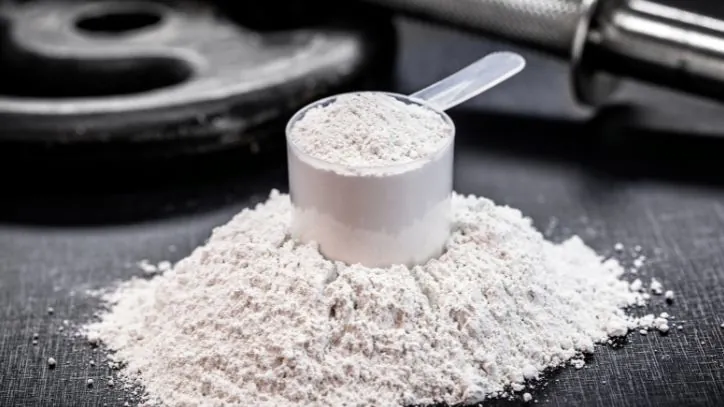Blog
Creatine Isn’t Just for Athletes!

When you hear the term “creatine,” what comes to mind? For many people, it conjures images of muscular athletes pushing their limits in the gym or supplements stacked alongside protein powders and energy drinks. Indeed, creatine is often marketed towards fitness enthusiasts and athletes, but what if I told you that its benefits extend far beyond just the realm of sports? Creatine is a compound that can positively impact a broader demographic, including those who may not regularly engage in high-intensity workouts.
What Is Creatine?
Creatine is a naturally occurring compound composed of three amino acids: arginine, glycine, and methionine. Most of the creatine in the body is stored in the muscles, while a smaller portion is found in the brain. Every day, our liver, pancreas, and kidneys produce approximately 1 gram of creatine. In addition to our body’s natural production, we can also increase our creatine levels through dietary sources, primarily red meat and seafood.
The Myths Surrounding Creatine
Despite the overwhelming evidence supporting the benefits of creatine, various myths and misconceptions persist. One of the most prevalent is that creatine is only useful for professional athletes or bodybuilders. While it is true that athletes have been among the first to embrace it due to its benefits for muscle energy and endurance, research shows that creatine offers advantages to nearly everyone, regardless of fitness level.
Another common myth is that creatine is dangerous or has harmful side effects. While, like any supplement, it must be taken in moderation, studies have indicated that creatine is generally safe for healthy individuals when used appropriately.
Benefits Beyond Muscle
- Injury Prevention
In addition to enhancing muscle performance, creatine may play a role in preventing injuries. According to research, creatine supplementation can help with muscle recovery, reduce muscle cramps, and lower the risk of injuries during high-intensity activities. This is particularly relevant for those who engage in sports or rigorous physical activities, but it’s also relevant for anyone who wishes to maintain an active lifestyle and avoid injury.
- Cognition and Brain Health
Emerging evidence suggests that creatine may also promote brain health. The brain consumes a significant amount of energy, and creatine may enhance cognitive performance by providing additional energy reserves. Studies have indicated that creatine may improve memory, focus, and overall cognitive function, particularly during mentally demanding tasks or when the brain is under stress. This makes it a compelling option for students, professionals, and anyone looking to maintain sharp cognitive abilities as they age.
- Sarcopenia and Bone Health
As we age, muscle mass naturally declines in a process known as sarcopenia. Creatine has been shown to counteract this decline by promoting muscle growth and strength, which can aid older adults in maintaining their independence and reducing the risk of falls. Studies suggest that creatine supplementation, combined with resistance training, can lead to significant improvements in muscle mass and strength in older populations.
In addition to muscle health, creatine may support bone health. Some research indicates that creatine might play a role in improving bone density, an essential factor for preventing conditions like osteoporosis in older adults.
- Heart Failure
Heart health is another area where creatine may have a positive impact. Studies show that creatine supplementation can benefit individuals with heart failure by improving heart function, increasing exercise capacity, and enhancing overall quality of life. Although more research is needed in this area, preliminary findings suggest that creatine could serve as a valuable adjunct therapy for individuals with cardiovascular conditions.
- Skin Health
Interestingly, creatine may also benefit skin health. Some studies have explored the use of creatine in cosmetic formulations, as it has antioxidant properties that can help improve skin hydration and elasticity. Furthermore, creatine has shown potential in protecting skin cells from oxidative stress, which is vital in fighting the signs of aging.
How to Incorporate Creatine into Your Diet
If you’re convinced of the benefits of creatine and are considering incorporating it into your routine, here are some steps to do so safely and effectively:
- Types of Creatine: Creatine monohydrate is the most researched and commonly used form of creatine. It’s affordable, effective, and safe. Other forms exist, such as creatine ethyl ester and creatine hydrochloride, but these are often not as well supported by research.
- Dosage: A common approach is to begin with a loading phase, consuming about 20 grams per day (divided into four 5-gram doses) for 5–7 days. This is followed by a maintenance dose of about 3–5 grams per day. Some prefer to skip the loading phase and start with the maintenance dose, which will also yield benefits, albeit more slowly.
- Timing: Creatine can be taken at any time of day; however, some studies suggest that taking it post-workout may enhance its effectiveness by promoting muscle recovery and growth.
- Stay Hydrated: Creatine draws water into your muscles, so it’s essential to drink plenty of water while supplementing to stay hydrated.
- Consult with a Professional: As with any supplement, it’s a good idea to consult with a healthcare provider or a nutritionist to ensure it’s appropriate for your individual health needs.
Dietary Sources of Creatine
If you prefer to obtain creatine through dietary means rather than supplements, you can increase your intake by consuming more of the following foods:
- Red Meat: Beef is a rich source of creatine, and consuming steaks or roasts can significantly boost your levels.
- Fish: Varieties such as salmon and tuna also contain creatine, making them excellent choices for those looking to increase their intake.
- Pork: This meat also contributes to your daily creatine needs.
In regions such as Arizona, where fresh beef production is plentiful, incorporating these foods can be a delicious and straightforward way to ensure adequate creatine levels while also enjoying the health benefits associated with a diet rich in high-quality protein.

Safety and Side Effects
While creatine is generally considered safe, excessive consumption can lead to side effects such as digestive discomfort, muscle cramping, or bloating. As previously mentioned, moderation is key, and individuals with pre-existing kidney conditions or concerns should consult with their healthcare provider before starting supplementation.
Conclusion
Creatine is not just a supplement for dedicated athletes; its benefits extend to a diverse range of individuals, including those focused on injury prevention, cognitive health, and overall wellness. As research continues to unveil its myriad advantages, it’s becoming increasingly clear that creatine is an invaluable ally for many, reaffirming the notion that this powerful compound warrants a place in not just the diets of professional athletes, but also in the daily routines of everyday individuals seeking to enhance their physical and mental health.
For those interested in delving deeper into health-related topics, consider exploring the Fill Your Plate Blog for more articles that can help inform and inspire healthy living choices.
By incorporating creatine into your regimen—either through supplementation or dietary means—you can tap into its diverse benefits and enhance your quality of life, regardless of your fitness level. Whether you’re an athlete, a focused professional, or simply someone looking to maintain optimal health, creatine can play a significant role in your wellness journey.
By Heide Kennedy, Arizona Farm Bureau Communications Intern


















